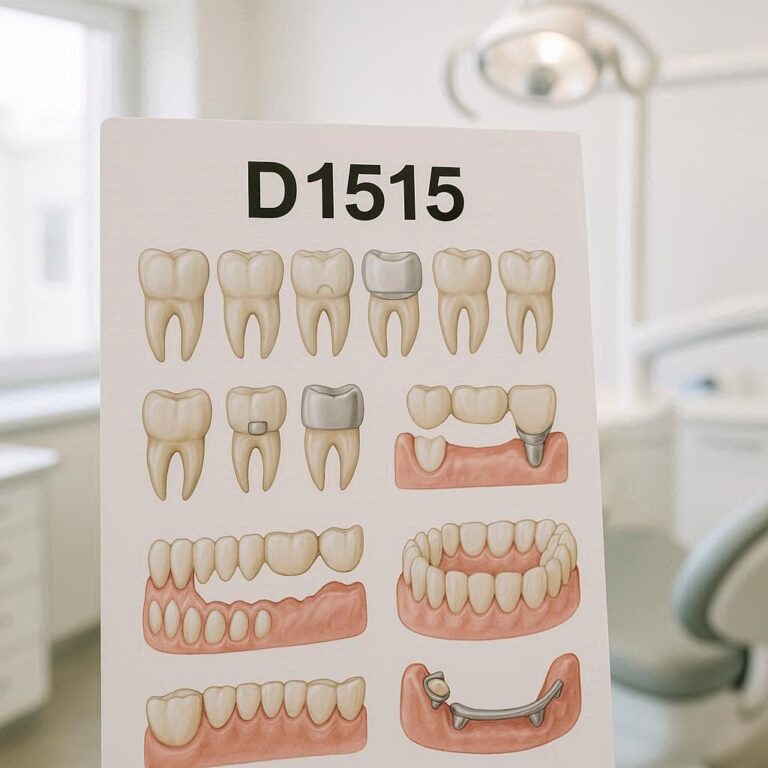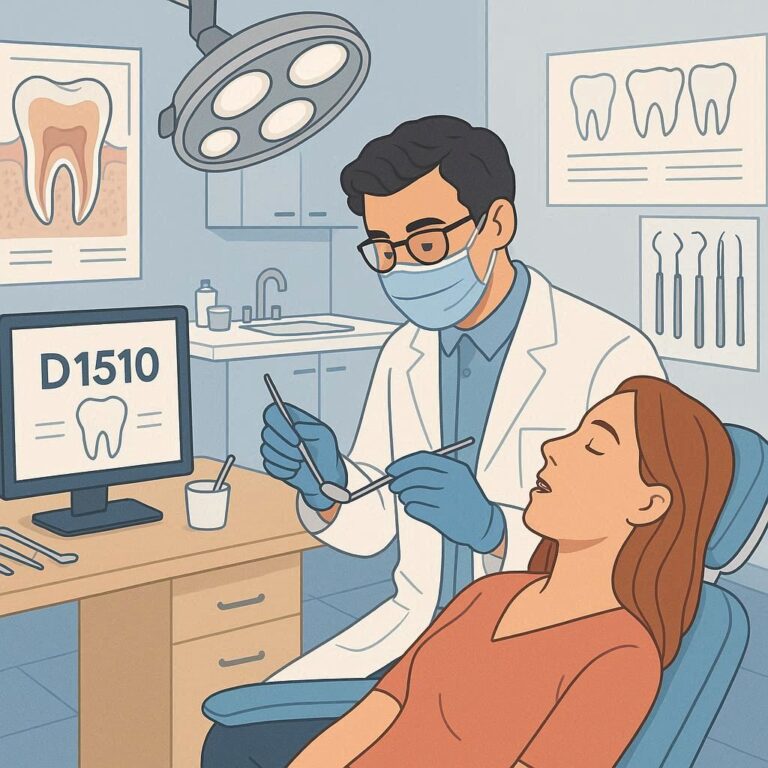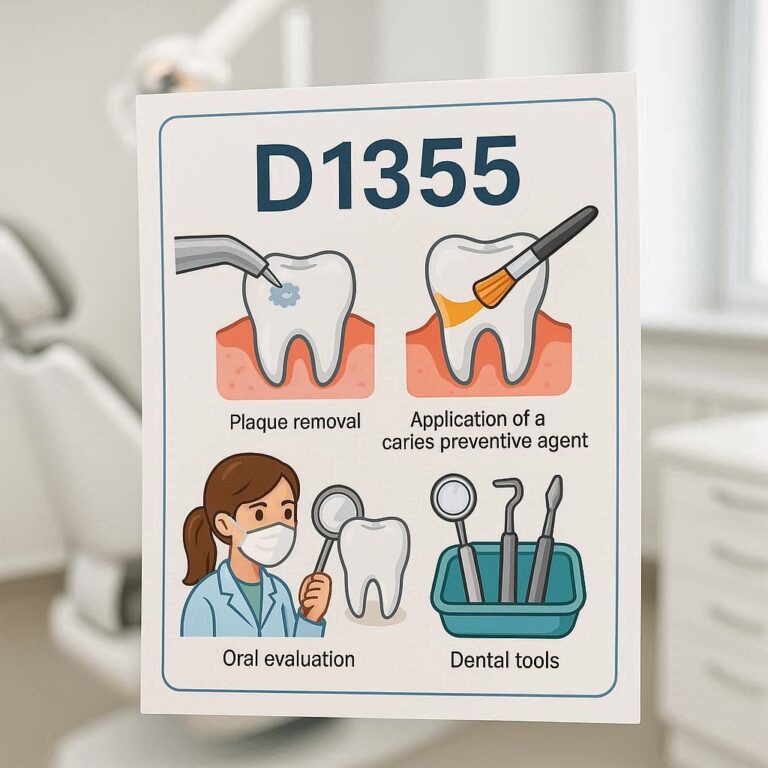The Ultimate Guide to Dental Code for a Bite Plate: Coverage, Uses, and Billing
A bite plate (or occlusal guard) is a dental appliance designed to protect teeth from grinding (bruxism), correct bite alignment, or assist in TMJ disorder treatment. Dentists use specific Current Dental Terminology (CDT) codes to bill for bite plates, ensuring proper insurance claims and reimbursement.
This comprehensive guide explores everything about dental codes for bite plates, including types, uses, insurance coverage, and billing best practices. Whether you’re a patient seeking clarity or a dental professional refining billing processes, this article provides in-depth insights.

2. What Is a Bite Plate?
A bite plate is a removable or fixed oral device made from acrylic or other durable materials. It fits over the upper or lower teeth to:
-
Prevent teeth grinding (bruxism)
-
Reduce jaw pain from TMJ disorders
-
Correct misaligned bites (malocclusion)
-
Protect teeth during sports
Bite plates are custom-made by dental labs based on a dentist’s prescription.
3. Types of Bite Plates
| Type | Purpose | Common CDT Code |
|---|---|---|
| Night Guard | Prevents damage from teeth grinding (bruxism) | D9944 |
| Occlusal Guard | Adjusts bite alignment and reduces TMJ pain | D7880 |
| Sports Mouthguard | Protects teeth during contact sports | D9944 (custom) |
| Anterior Bite Plate | Used in orthodontics to correct deep bites | D8210 |
4. Common Uses of Bite Plates in Dentistry
A. Treating Bruxism (Teeth Grinding)
-
Prevents enamel wear and fractures.
-
Reduces muscle strain in the jaw.
B. TMJ Disorder Relief
-
Alleviates pain from temporomandibular joint dysfunction.
-
Helps reposition the jaw for better alignment.
C. Orthodontic Applications
-
Corrects deep bites or crossbites.
-
Assists in post-braces retention.
D. Sports Protection
-
Custom-fitted guards prevent dental injuries in athletes.
5. Dental Codes for Bite Plates (CDT Codes)
The American Dental Association (ADA) assigns CDT codes for bite plates:
-
D9944 – Occlusal Guard (Hard, Custom-Fabricated)
-
Used for night guards and TMJ appliances.
-
-
D7880 – Occlusal Orthotic Device
-
For TMJ-related bite correction.
-
-
D8210 – Bite Plane (Acrylic)
-
Used in orthodontic treatments.
-
Note: Insurance companies may require pre-authorization for certain codes.
6. Insurance Coverage and Reimbursement
-
Medical vs. Dental Insurance:
-
Dental insurance may cover bite plates under “preventive” or “restorative” benefits.
-
Medical insurance may cover them if linked to TMJ disorder.
-
-
Typical Coverage:
-
50%-80% of the cost, depending on the plan.
-
Some insurers limit coverage to one guard every 3-5 years.
-
Pro Tip: Submit a Letter of Medical Necessity (LMN) if insurance denies the claim.
7. How Dentists Determine the Need for a Bite Plate
Dentists assess:
-
Signs of tooth wear from grinding.
-
Jaw pain or clicking (TMJ symptoms).
-
Bite misalignment issues.
-
Sleep study results (for severe bruxism cases).
8. The Process of Getting a Custom Bite Plate
-
Examination & Diagnosis – Dentist evaluates bite and jaw function.
-
Impressions or Digital Scan – For a precise fit.
-
Lab Fabrication – Takes 1-2 weeks.
-
Fitting & Adjustments – Ensures comfort and effectiveness.
9. Maintenance and Care for Bite Plates
-
Clean daily with a soft toothbrush and mild soap.
-
Soak in denture cleaner weekly.
-
Store in a protective case when not in use.
-
Avoid hot water to prevent warping.
10. Common Issues and Troubleshooting
| Issue | Solution |
|---|---|
| Poor Fit | Visit the dentist for adjustments. |
| Excessive Wear | Replace every 2-3 years. |
| Bad Odor | Soak in antibacterial solution. |
11. Cost of Bite Plates and Financing Options
-
Custom Bite Plate: 300−800 (varies by material and lab fees).
-
Over-the-Counter Guards: 20−100 (less durable).
-
Financing:
-
Dental insurance partial coverage.
-
HSA/FSA payments.
-
Payment plans through dental offices.
-
12. FAQs About Bite Plates
Q1: How long does a bite plate last?
A: Typically 2-5 years, depending on wear and care.
Q2: Can I use a sports mouthguard for bruxism?
A: No, sports guards are not designed for long-term grinding protection.
Q3: Will insurance cover a bite plate for TMJ?
A: Sometimes, but medical insurance may require a TMJ diagnosis.
13. Conclusion
Understanding dental codes for bite plates (like D9944, D7880, and D8210) ensures proper insurance billing and reimbursement. Whether for bruxism, TMJ, or orthodontics, bite plates protect teeth and improve oral health. Always consult your dentist for a custom-fitted solution and verify insurance coverage beforehand.


